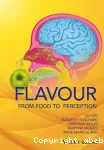Adresse
Infodoc : Réseau des bibliothèques et centres de documentation d'AgroParisTechFrance
contact

Catégories
|
RAMEAU , Nom commun , Perception
PerceptionSynonyme(s)Perception (psychologie) Psychologie de la perception |
Documents disponibles dans cette catégorie (11)
 Ajouter le résultat dans votre panier
Visionner les documents numériques
Faire une suggestion Affiner la recherche Interroger des sources externes
Ajouter le résultat dans votre panier
Visionner les documents numériques
Faire une suggestion Affiner la recherche Interroger des sources externes
 Thèse1 vol. (327 p.)
Thèse1 vol. (327 p.)
1 vol. (327 p.)
 Thèse1 vol. (264 p.)
Thèse1 vol. (264 p.)
1 vol. (264 p.)
 Livre
Livre978-1-118-92941-41 vol. (XVII-400 p.)
1 vol. (XVII-400 p.)ISBN : 978-1-118-92941-4 
 Livre
Livre978-1-138-33824-11 vol. (XVIII-726 p.)
1 vol. (XVIII-726 p.)ISBN : 978-1-138-33824-1 
 Thèse
Thèse
 Thèse1 vol. (79 p. - pagination multiple)
Thèse1 vol. (79 p. - pagination multiple)
1 vol. (79 p. - pagination multiple)
 Livre
Livre978-0-08-102089-01 vol. (XX-630 p.)
1 vol. (XX-630 p.)ISBN : 978-0-08-102089-0 
 Article
Article


 Article
ArticleSommes-nous tous condamnés à devenir des poissons rouges ?
in Gérer et comprendre , n° 142, 01/12/2020

 Livre420.01 FRF
Livre420.01 FRF978-2-10-005710-8448 p.
448 p.Prix : 420.01 FRF ISBN : 978-2-10-005710-8





